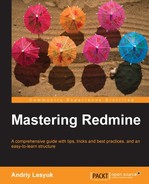Perhaps you have already noticed My page, where you are redirected to after successful login (unless you were redirected to the login form from some other page)? If not, this page can be accessed by using the My page link in the top-left menu as shown in the following screenshot:
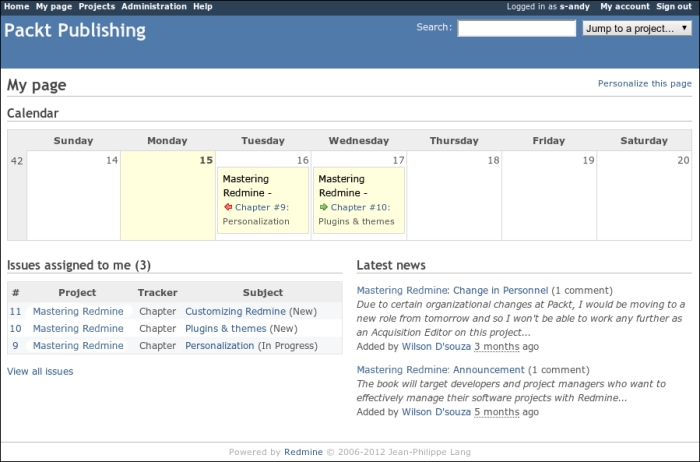
The idea of this page is to assemble all the information related to the user in one place, so that they can quickly move to the page of interest. But, as you already know, there is a lot of information the user can be interested in. Therefore, this page comes with the Personalize this page link.
After clicking on this link, the personalization screen opens as shown in the following screenshot:

On this screen, each block of the personal page turns into a draggable and removable block. To drag a block, we just click its header and move it while keeping the mouse button clicked, (for example, I moved the Latest news block in the preceding screenshot). Any block can also be removed by clicking the ![]() icon in the top-right hand corner of the block.
icon in the top-right hand corner of the block.
You should have noticed that the page is divided into three sections—top-wide section, left section, and right section. Each section is outlined by the dashed line. We can move blocks between these sections. We can also change the order of the blocks in the sections by moving them inside it. A section can be empty.
Besides removing blocks, we can add them in by using the My page block drop-down list as shown in the following screenshot:
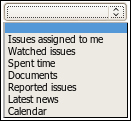
These are the names of all the available blocks. You can add each of them to your personal page (but only once). To do this, select the block name and click on the Add link—the block will appear in the top-wide section, where you can move it from another sectin, if you want.
Now let's review what information these blocks provide.
This block contains the list of issues, which were assigned to the user as shown in the following screenshot:

The list is limited to 10 issues but the View all issues link allows you to move to the issue list containing all such issues. The list is ordered by the priority and the last update time.
The Watched issues block is very much like the Issues assigned to me block:
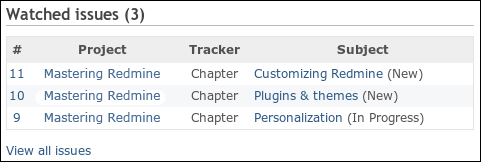
The difference is that the block lists issues that are watched by the user and sorted by te update time only.
If you use Redmine for time tracking, you may find this block useful.
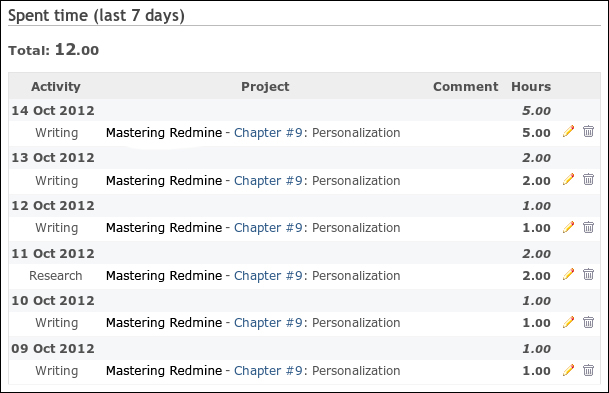
It lists the time entries of the user for the last 7 days. As you can see, time entries can be edited or deleted here.
The Documents block lists up to 10 documents from the projects that the user is a member of, as shown in the following screenshot:

The list contains recently added documents.
This block contains issues which were created by the user. In fact, this is the only place where you can quickly find issues, reported by you, and, therefore, I personally use this block quite often.
You can also create an issue list custom query to list issues reported by you.
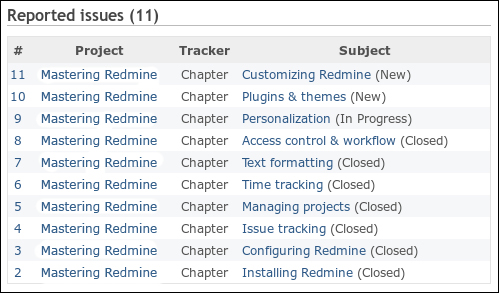
The list is ordered by the update time.
